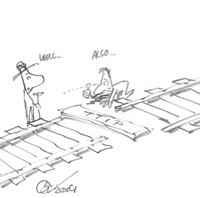KANBrief 1/15

The harmonization of statutory provisions, standards and conformity assessment procedures has proved effective in Europe. For negotiations of the Transatlantic Trade and Investment Partnership (TTIP) however, many appear to consider mutual recognition more appealing than harmonization. Nevertheless: close examination reveals problems with this approach.
The EU's mandate for negotiations states that the elimination of unnecessary barriers to trade is an objective of the TTIP. Measures for the elimination of these barriers are to include mutual recognition or harmonization. The cases and conditions in and under which the EU considers mutual recognition to be possible are however not being evaluated.
Together with KAN and CIOP-PIB, the Polish OSH institute, the DGUV has analysed the possible effects of mutual recognition in the area of technical regulations, standards and conformity assessment procedures for work equipment and protective equipment (Technical regulations, standards and conformity assessment procedures: the issue of mutual recognition November 2014). The analysis found that for work equipment (such as machinery and electrical products) and protective equipment in particular, the underlying principles and assignment of responsibility between the affected market players differ so widely between the EU and the USA that mutual recognition could lead to hazards.
The reason for this is not for example that the USA has lower standards for safety and health; rather, it is a result of differences in the legal, safety and standardization philosophies, and the different functions of product standards within these philosophies. The approaches differ fundamentally in a number of ways. For example: the hierarchy of protective measures and the freedom of the body of standards from contradictions are two defining aspects for standardization in the EU.
Level of protection barely comparable
A comparison between the level of protection in the EU and that in the USA is exceptionally difficult owing to the differences in approach. Even where the level of protection is equivalent, however, mutual recognition of standards or conformity assessment procedures could give rise to hazards. This can be seen from the following examples:
The Federation of German Industries (BDI) points out that mutual recognition requires complex reviews and agreements on both sides of the Atlantic, and a comparable level of protection. It notes that the regulations, for example in the area of machine construction, currently differ too widely for this purpose (see BDI: Comments on the public presentation of TTIP (in German), September 2014; pp. 1-2). The first objective must therefore be to improve the compatibility of the systems.
Were mutual recognition to result in the standards of American standards organizations being valid alongside European standards, it would spell the end of the freedom from contradiction of the European body of standards, in which only one standard may exist for any one subject of standardization and conflicting national standards must be withdrawn. This would constitute a fundamental challenge to the New Approach, which has contributed substantially to the European Single Market for goods and which forms the basis for safe products in the EU.
Rüdiger Reitz
ruediger.reitz@dguv.de